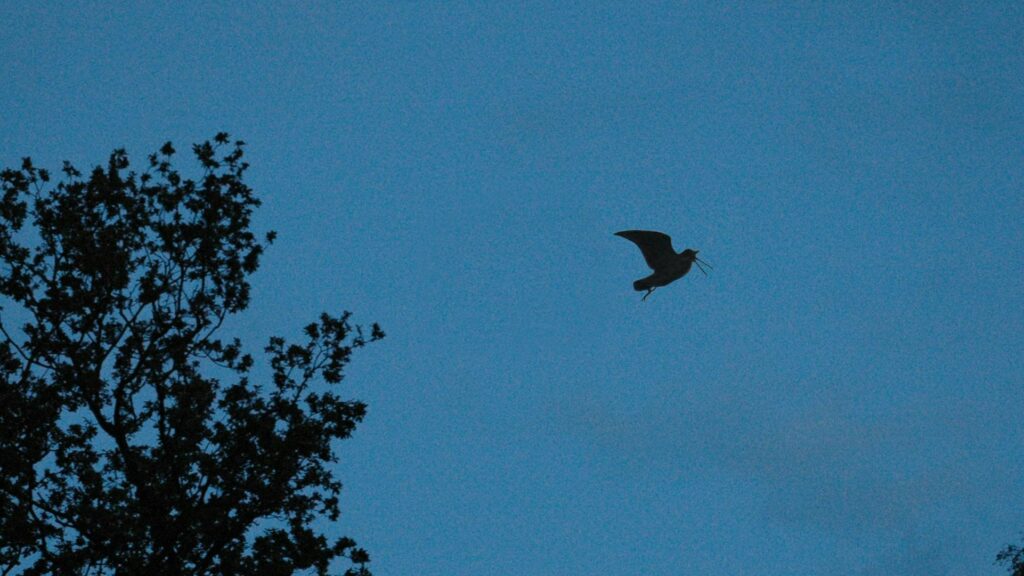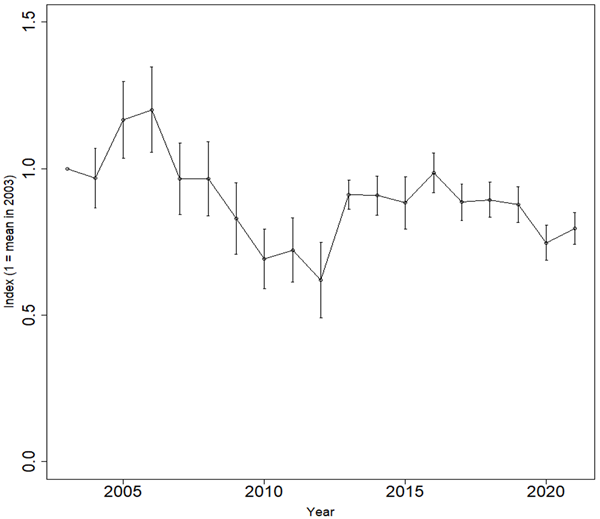
The GWCT is calling for volunteers to count ‘roding’ woodcock this spring. Potential surveyors are required to conduct two to four dusk surveys between now and 1 July, then enter their count data online. Recognising the male woodcock’s distinctive roding flights is relatively easy, and a great way to observe this otherwise shy species.
Returning surveyors
If you’ve taken part in the GWCT/BTO ‘annual’ woodcock surveys before, please consider getting involved again this spring. This long-running dataset (19 years and counting) relies on the repetition of previously surveyed sites – if you are registered and have taken part before, we encourage you to revisit your chosen site. You can refresh your memory of the survey methods and enter your data here. It is not vital that a site is visited every single year, only that it is repeated, so if you have missed a year or two, it is not too late to resume counting!
New surveyors
The GWCT/BTO Breeding Woodcock Survey began in 2003 and introduced a national scheme of ‘roding counts’ to assess the woodcock’s status in Britain. The survey was repeated in 2013 and is now confirmed for 2023. We are asking surveyors to get involved with ‘annual’ woodcock surveys, conducted at a subsample of sites, between the larger ten-yearly surveys. Annual counts provide broader context to the ten-yearly surveys, which is particularly important, because roding count results can show a high degree of annual variation.
Potential surveyors can register their interest on the BTO website (our collaborators on this project) to see a full set of instructions and a map of currently available survey sites. If there is an unsurveyed site near you, you’ll be able to sign up to cover the site for us. If not, it is possible to survey a non-random site – please contact cheward@gwct.org.uk to arrange this.
All surveyors need to do is make two to four (usually three) dusk visits to the site and count roding woodcock for 75 minutes. Roding is the conspicuous display that male woodcock use to attract a mate, and it’s highly likely you’ll see roding males at any site where woodcock breed. The results of your counts can then be entered on the BTO website.

The National Survey 2023
As mentioned above, the ten-yearly repeat of our big national survey is due to take place next year. This survey will attempt to cover 800-1,000 sites nationally with the help of volunteers across the country. This will be used to estimate the size of our breeding woodcock population. In 2023, it is especially important to ensure representative coverage across remote parts of the country where woodcock still breed in reasonable numbers, but where survey coverage is traditionally patchy. If this is something that you may be able to help us with, registering for the 2022 annual counts provides a great ‘practice run’ for the big one next year, and will generate useful data in the process.
As always, please remember surveys are to be conducted with the necessary permissions, either via public access or with landowner’s consent if accessing privately owned sites.
